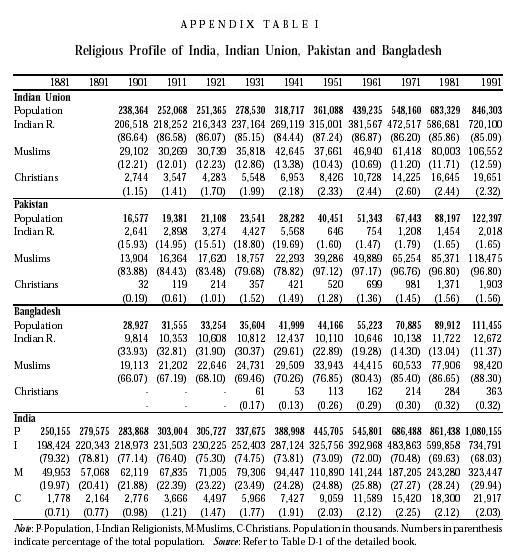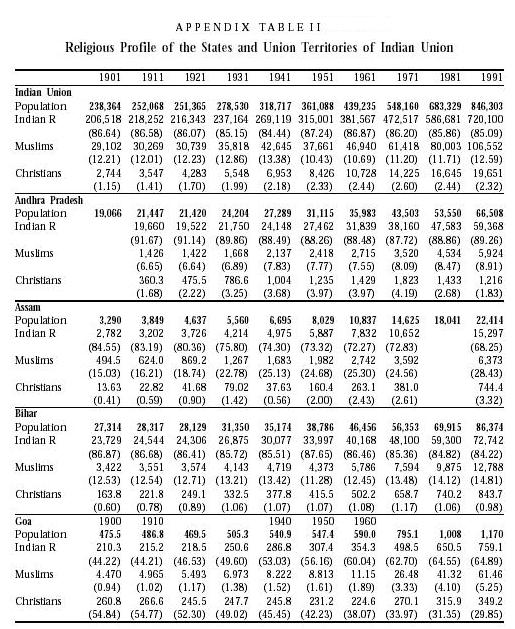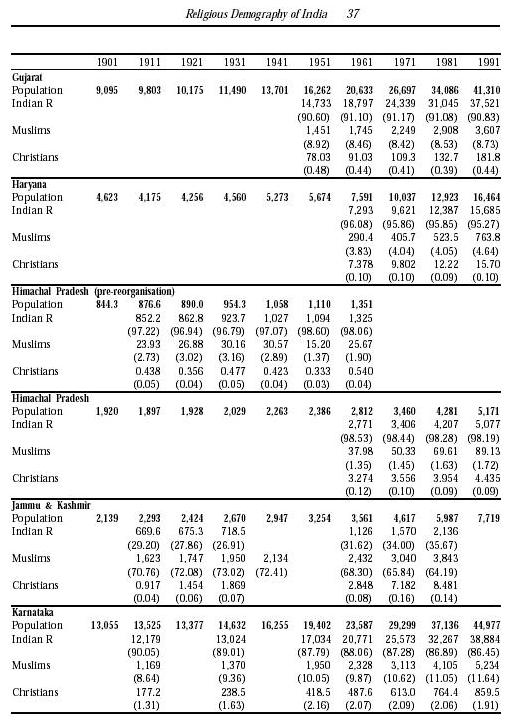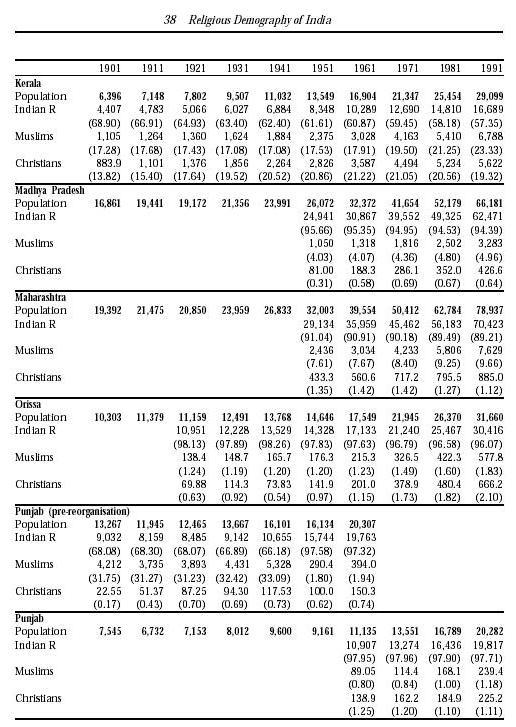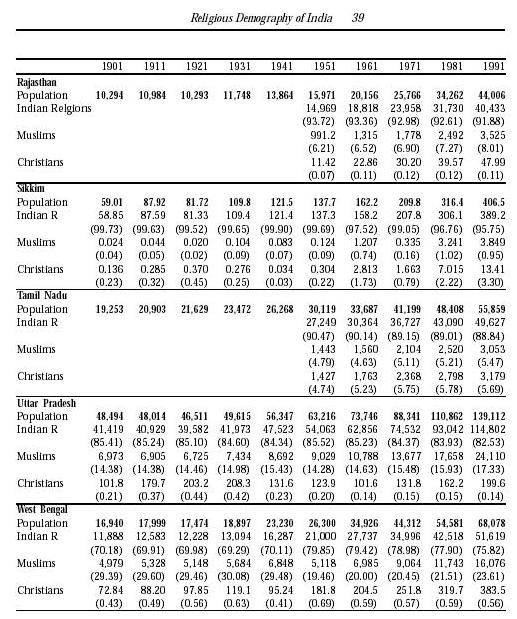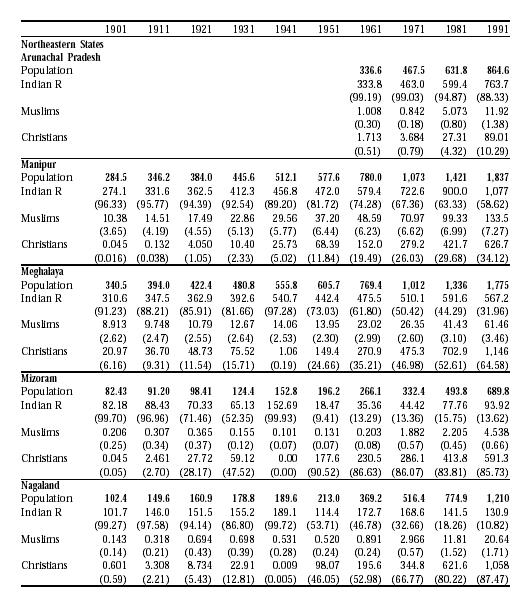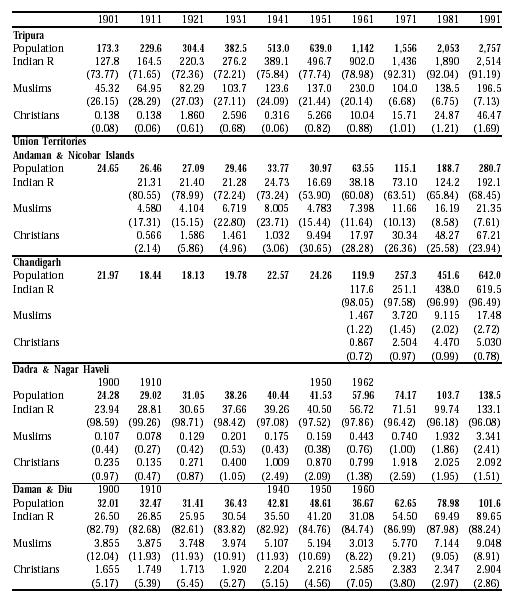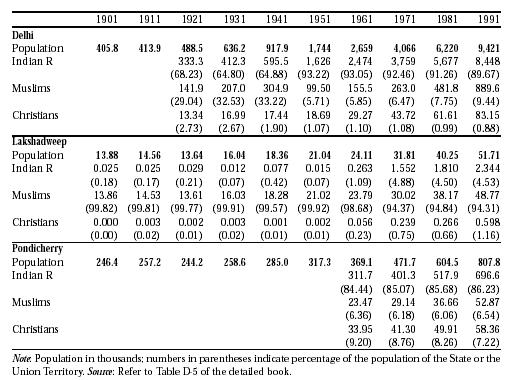Subcontinent Profile
Conclusion
Thus, seen in the perspective of the changing religious demography of the world during the twentieth century, Indian situation does not seem too alarming. Christianity and Islam have both made substantial gains in the world. But it is Africa and some relatively smaller countries of Asia that have experienced the impact of growth of these religions the most. Africa has comprehensively lost its Native Religionist moorings during the twentieth century. And in Asia, countries like Indonesia and South Korea have seen their religious complexion change fairly thoroughly. On the other hand, an ancient civilisation like that of China has countenanced no change in its religious profile, nor have the relatively more recent civilisational regions of the world like West Asia, North Africa and Europe swayed from their adopted faiths.
India, however, has not remained unaffected. Between 1900 and 1990, Muslim share in the population of India has increased by about 8 percentage points to reach nearly 30 percent; and the share of Christians has increased by more than 1 percentage point to reach 2 percent of the population. More importantly, the increase in Muslim population has been geographically localised, and this has led to Partition of the country to carve out two separate Islamic states. Only a few countries of the world, notably Indonesia in recent times, and some relatively unsettled countries of Africa, have had to undergo similar partitioning because of changing religious profile of the population. Growth of Christianity in India during the twentieth century has also been concentrated in specific geographical pockets, in some of which Christians now form a predominant majority.
Notwithstanding this continuing erosion of the share of Indian Religionists in specific pockets and regions, lying on the northern, eastern, northeastern and southwestern borders of Indian Union, much of the country has remained largely immune to the advance of Christianity or Islam. Indian Religionists have maintained a dominant presence in almost all of the northwestern, western, central and southern parts of Indian Union. These parts together comprise nearly twothirds of the area and three-fifths of the population of Indian Union. In this vast region, Indian Religionists have shown great vitality; any tendency towards significant erosion of their share in any pocket of this region has often been swiftly neutralised. Such vitality, however, has not helped them in defending their presence on the borders of the country where the efforts of the society, to be effective, necessarily need the vigilance and support of a state committed to protecting and preserving the civilisational identity, pride and genius of the nation. We have so far failed to fashion such a state for ourselves.
Long Live Sanatan Dharam
